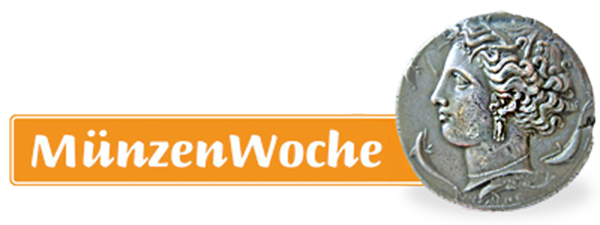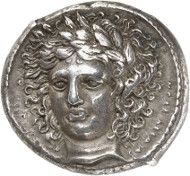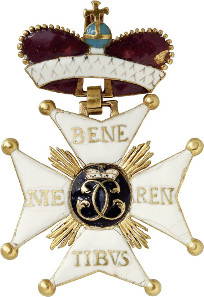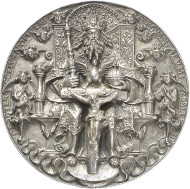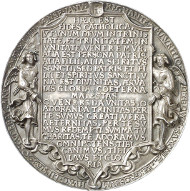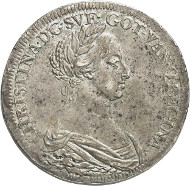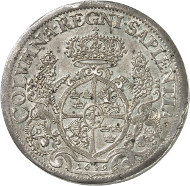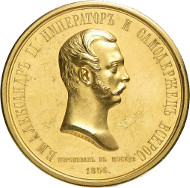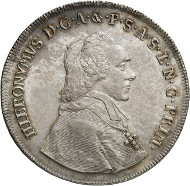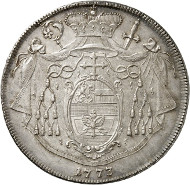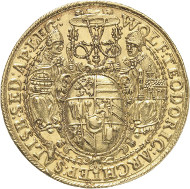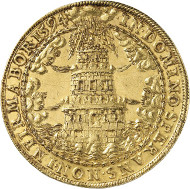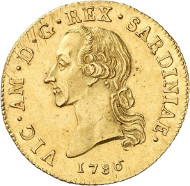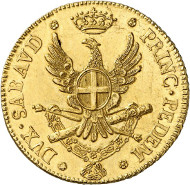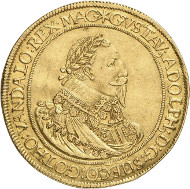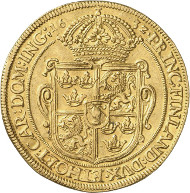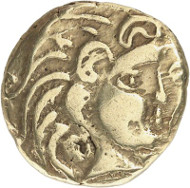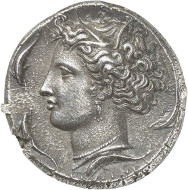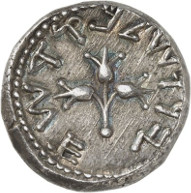25-09-2015 – 01-10-2015
Auction 265-270
Künker Fall Auction Sale Week: Six Auctions, About 7,600 Lots, Many Special Collections
From September 26th, 2015 to October 2nd, 2015 the numismatic world will once again gather at the Steigenberger Hotel Remarque to experience six days of auctions offering a multitude of highlights, special collections and rarities.
Lot 8117: GREEKS. Sicily. Catane. Tetradrachm, c. 405/402, signed by Herakleidas. Ex Jameson Coll. 547. Very rare. Extremely fine. Estimate: 100,000,- euros.
Let us have a brief look at the stars of this six day auction event: orders and decorations from around the world, a special collection Minden, Swedish numismatic rarities, the largest collection of Brandenburg in Franconia ever to be on the market, gold and silver coins of the Archbishopric of Salzburg, a perfect Catane tetradrachm and Roman gold coins of the finest grades. Surely, this broad array of numismatic diversity, brought together in six auction catalogs, lets every collector find his or her favorite item.
Auction 265: Orders and Decorations from around the World
The 12th phaleristic Künker auction consists of more than 900 lots of world orders and decorations. The sale focuses on civil and military decorations of the Kingdom of Prussia.
Lot 189: Duchy of Wuerttemberg: Military Order of St. Charles of Wuerttemberg, Grand Cross Badge (Commander). Issue from 1759, gold and enamel. Extremely rare. II-II. Estimate: 20,000,- euros.
The most important item of this segment will very likely be the only Grand Cross Badge of the Military Order of St. Charles Eugene of Wuerttemberg made of gold and enamel. It is the only specimen known to exist. With the Order’s founder in attendance, this badge was awarded to General Jean-Baptiste-Joseph de Maillard de la Martinière, Baron de Gorcy in 1759.
Also on the auction block will be the very well documented estate of Colonel Paul-Hermann Werner, comprising Knight’s Crosses. Colonel Werner was the most important commander of the legendary Panzerregiment 31, nicknamed “Red Devils.” The heart of the material from foreign countries constitutes a collection of orders and decorations from Scandinavia. And lastly, there will be rarities from Austria, Belgium, France, Great Britain, Italy, Poland, Portugal and Russia.
Lot 1432: GERMANY. Saxony. Cast silver medal, trinity medal or moritzpfennig, 1544 (probably made around 1600) by Hans Reinhardt the Elder. Extremely fine. Estimate: 5,000,- euros.
Auction 266: Coins and Medals from Medieval and Modern Times / Russian Coins and Medals
The second day of the Künker Fall Auction Sale Week will kick off with pre-1871 Germany. We would like to highlight an exceptional small collection of Minden and more than 200 lots from Saxony, including the famous trinity medal created by Hans Reinhart the Elder, estimated at 5,000 euros, and the 1780 konventionsthaler for diligence in the finest grade, estimated at 6,000 euros.
The multiple lots assembled by Künker are also always worth a closer look, notably a special collection of reckoning counters adding up to a total of 1,460 specimens which, as a package, will be called out for 25,000 euros.
Lot 1987: SWEDEN. Christina, 1632-1654. 2 riksdaler 1649, Stockholm. Ex Bonde Coll. Extremely rare. Extremely fine. Estimate: 100,000,- euros.
The following lots of coins and medals from abroad will also offer many rarities and this time the Swedish coins exceed all expectations. There are about 120 lots listed in the catalog, including unique specimens and coins of utmost rarity. Spectacular features of this section are a 1540 salvatordaler struck in Västeras, which represents the second specimen known to be in a private collection (estimate: 2,500 euros). Furthermore, the Swedish segment will feature a 1649 double riksdaler from the mint of Stockholm, which used to call the Bonde Collection its home, even prior to 1874 (estimate: 100,000 euros).
Lastly, Russian coins and medals will conclude Auction 266. As always, the connoisseur will find some truly remarkable individual items in superb grades. It is hard to say what these specimens will obtain in the auction. One such specimen is a seemingly unspectacular, but very rare 1731 10 kopeck piece with a very interesting feature: through 10 dots on the reverse even the illiterate user was able to determine the value of this little coin (estimate: 2,500 euros).
Lot 2401: RUSSIA. Alexander II, 1855-1881. Gold medal of 50 ducats 1856 by A. Lyalin and M. Kuchkin on the coronation of Alexander. Very rare. Extremely fine. Estimate: 50,000,- euros.
Last but not least, a gold medal commemorating the coronation of Tsar Alexander II will be on sale. This extremely fine specimen weighs 173.37 g and has a pre-sale estimate of 50,000 euros.
Auction 267: Brandenburg in Franconia and the Franconian Imperial Circle – The Roland Grüber Collection
The Roland Grüber Collection is an incredible work of a lifetime. As an avid and meticulous coin collector Mr Grüber collected a great number of coins and medals related to Brandenburg in Franconia over the last two decades. It is not hard to see how much work this collection thrived off and how many hours of research were spent in order to locate the pieces. As it befits a real collector Mr Grüber not only chose exclusive specimen to be part of his collection but also included everyday change related to the topic. On the one hand this offers a very round picture of the subject, and on the other it offers lot estimates which vary between 10 and 25,000 euros.
To try to even present a selection of highlights of the Roland Grüber Collection is a hard thing to do, when there are so many the spotlight can be on.
Lot 3043: BRANDENBURG IN FRANCONIA. John III, 1404-1420. Gold gulden n. d., Neustadt an der Aisch. Ex SBV Auction 15 (1986), 277. Unique. Very fine. Estimate: 10,000,- euros.
But here are a few: a unique gold gulden of Burgrave John III (1415-1420) from Neustadt and der Aisch (estimate: 10.000 euros), a 1579 gold gulden commemorating the “Steel Shooting” (“Stahlschießen”) at Plassenburg near Kulmbach on the occasion of the wedding of George Frederick (estimate: 20.000 euros), a triple 1676 reichsthalerklippe celebrating a bird shooting competition in Dresden (estimate: 20.000 euros), a unique 1629 5 ducat piece, bearing the portraits of the Margraves and brothers Frederick, Albert and Christian (estimate: 20.000 euros) …
Lot 4868: BRANDENBURG IN FRANCONIA. Christian Frederick Charles Alexander, 1757-1791. Golden achievement medal of 10 ducats n. d. (around 1780) by John Samuel Götzinger. Ex Heidelberger Münzhandlung Auction 11 (1994), 1510. Extremely rare. FDC. Estimate: 10,000,- euros.
… and a golden achievement medal of 10 ducats (estimate: 10,000 euros). This medal from around 1780 was created by John Samuel Götzinger for the Margrave Frederick Charles Alexander and was chosen as the cover illustration of this catalog.
Last but not least, the Roland Grüber Collection also includes almost 400 lots featuring Franconia and the Bavarian Crown, cities and estates located in Franconia, individuals related to the subject of Franconia, the time of the Swedish occupation of Franconia, the Franconian Imperial Circle and medals created by the medalists of the Reich family, based in the city Fürth.
Lot 5727: SALZBURG. Hieronymus of Colloredo, 1772-1803. 1790 Löwenthaler. Ex Leu Auction 75 (1999), 1100. Extremely rare. Nearly FDC. Estimate: 75,000,- euros.
Auction 268: Coins and Medals of the Archbishopric of Salzburg – The Numitor Collection
The afternoon of September 30th, 2015 will be devoted to gold coins and thaler-like coins of Salzburg when the Numitor Collection will be auctioned off. With all the great rarities and many unique specimen present, of which all are of the best grade possible, this collection can truly serve as an illustrated book of cultural history. The spectrum of numismatic items ranges from the first gold gulden of Pilgrim II of Puchheim (1365-1396), to various fractions of the famous rübenthaler (which is a guldiner, needless to add), to the golden tower coins of Wolf Dietrich of Raitenau (with all denominations between 3 ducats and 10 ducats), to the so-called 1790 löwenthaler of the last Prince Archbishopric of Salzburg, Hieronymus of Colloredo.
Lot 5581: SALZBURG. Wolf Dietrich of Raitenau, 1587-1612. 10 ducats 1594. Tower coinage. Extremely rare. Extremely fine. Estimate: 100,000,- euros.
The item with the currently highest appraisal of this auction sale is a 10 ducat tower coin from 1594, estimated at 100.000 euros. Another five coins, each estimated at 75.000 euros, also have a good chance of obtaining new record prices: an undated gold gulden of Sigismund of Volkersdorf, a quintuple dukatenklippe of Matthew Lang of Wellenburg, which was struck from a magnificent die made by Ulrich Ursenthaler the Elder, a 1565 12 ducat piece of John Jacob Khuen of Belasi, a 1686 10 ducat piece commemorating the ordination to cardinalhood and finally, the above mentioned 1790 löwenthaler.
It is important to point out, that not all the coins of this spectacular collection are estimated in the five-digit region. Every collector can find interesting material and the appraisals start at 150 euros.
Auction 269: Gold Coins / German Coins after 1871
Auction 269 is entirely devoted to gold coins and German coins after 1871. It goes without saying that this auction sale offers a great number of rarities.
Lot 6329: ITALY. Sardinia. Victor Amadeus III, 1773-1796. 1/2 carlino of 2.5 doppie 1786, Turin. Ex Künker Auction 207 (2012), 6305. Very rare. Extremely fine. Estimate: 17,500,- euros.
To name just a few: 100 and 20 drachmai pieces from 1940, struck on the occasion of the 5th anniversary of the return of George II of Greece from exile (estimate: 15,000 and 12,500 euros), British 5 guinea pieces, Italian rarities such as the 1/2 carlino of Victor Amadeus III of Sardinia, struck in Turin in 1786 (estimate: 17,500 euros), and a doppia oncia d’oro of Ferdinand III of Sicily, depicting the triskeles on its reverse, minted in Palermo in 1814 (estimate: 15,000 euros).
Lot 6914: GERMANY. Nuremberg. 6 ducats 1632, minted under Swedish occupation by Gustavus II Adolphus. Oldenburg Coll., ex Bukowski Auction 113 (1898), 1396. Extremely rare. Very fine to extremely fine. Estimate: 50,000,- euros.
The highlights from pre-1871 Germany are a Bavarian 8 ducat piece paying homage to Maximilian I (estimate: 30,000 euros), a double karolin of Charles Albert of Bavaria and his wife, on the founding of the Royal Military Order of Saint George for the Defense of the Faith and the Immaculate Conception in 1729 (estimate: 30,000 euros), as well as a 6 ducat piece from Nuremberg, struck under Swedish occupation by Gustavus II Adolphus in 1632 (estimate: 50,000 euros).
Among the German coins produced after 1871, a particularly interesting pattern can be found. This 2 mark piece bears the date of 1950 and was only struck in small numbers by the Munich mint (estimate: 7,500 euros).
Auction 270: Coins from the Ancient World
In the final sale of the Künker Fall Auction 1,230 lots, comprising coins from the ancient world, will be auctioned off.
Lot 8006: CELTS. Parisii. Gold stater, 2nd / 1st cent. BC. Very rare. Nearly extremely fine. Estimate: 25,000,- euros.
The session will start off with two real gems, which are both icons of Celtic numismatics. The first is a gold stater of the Parisii and its stylized design strikes almost as modern (estimate: 25,000 euros). The second piece is a Pannonian imitation of the crested rider type tetradrachms of Philip II, which reads an enigmatic legend (estimate: 25,000 euros).
But this is only the beginning of the sale. An impressive series of Sicilian tetradrachms includes an outstanding piece from Catane, featuring the facing bust of Apollo, signed by Heracleidas. The coin derives from the Jameson Collection, which is one of the best provenances a collector can aspire to call his or her own (estimate: 100,000 euros).
Lot 8135: GREEKS. Sicily. Syracuse. Decadrachm, after 405, signed by Euainetos. Virzi Coll., ex Hirsch Auction 32 (1912), 322. Very rare. Extremely fine. Estimate: 50,000,- euros.
But also the Syracusian tetradrachm, signed by Euainetos, has an outstanding provenance: It was once part of the Virzi Collection, which in 1912 was sold at a Jacob Hirsch auction in Munich (estimate: 50,000 euros). Further highlights from the Greek department are: a tetradrachm from Ainos (estimate: 10,000 euros), a distater of Alexander the Great (estimate: 10,000 euros), two gorgeous specimens from Crete – a stater from Phaistos (estimate: 10,000 euros) and a stater from Polyrhenia (estimate: 5,000 euros), an Archaic stater from Karpathos (estimate: 10,000 euros), and an extremely fine tetradrachm, depicting the facing head of Helios from Rhodes (estimate: 25,000 euros).
Lot 8379: JUDAEA. 1st Jewish Revolt, 66-70. Shekel, year 1 (66/67), Jerusalem. Very rare. Extremely fine. Estimate: 35,000,- euros.
There will also be a small special collection of Judean coins offered for sale. It features silver shekels of both Jewish-Roman wars in superb conditions. From the first Jewish-Roman war a shekel (estimate: 35,000 euros) and a half shekel (estimate: 7,500) of year 1 will be on sale and from the second Jewish-Roman war a tetradrachm of year 3 will be on the auction block (estimate: 5,000 euros).
Even rarer is the perfect gold stater of Eucratides I, minted in Pushkalavati (estimate: 75,000 euros) and the pentadrachm of Berenice II from Alexandria (estimate: 40,000 euros).
Lot 8969: ROMAN IMPERIAL TIMES. Crispus. Solidus, 324, Nicomedia. Mazzini Coll., Vierordt Coll., ex Schulman Auction (1923), 2694. Extremely rare. Extremely fine. Estimate: 100,000,- euros.
From the Roman department the perfect aurei certainly stand out. And only a few names may suffice: Vitellius (estimate: 50,000 euros), Vespasian (estimate: 25,000 euros), Hadrian (estimate: 30,000 euros), Lucius Verus (estimate: 20,000 euros), Crispina (estimate: 50,000 euros) Didius Julianus (estimate: 35,000 euros), and Licinius (estimate: 40,000 euros). The highest estimate comes for a solidus of Crispus, struck in Nicomedia in 324. It exhibits an unusual, heroic nude bust of the imperial son to the left, holding shield and spear. This particular piece comes from the Vierordt and Mazzini Collection (estimate: 100,000 euros).
When turning to Silver and Bronze, the collector will also discover many magnificent items. Anyone interested in Roman history will also be pleased to find a special collection of Roman Imperial Bronzes. It was assembled by a historian and pedagogue, whose historical interests outweighed the perfect condition of an item.
The catalogs may be ordered at Künker, Nobbenburger Straße 4a, D-49076 Osnabrück; phone + 49 541 96202 0; telefax: + 49 541 96202 22; or by writing an email. All coins on offer can be viewed online here.


